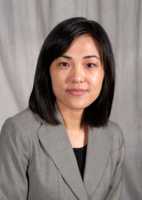
10 Jan More Nurse Practitioners in Rural Areas Help Offset Primary Care Shortage
MedicalResearch.com Interview with:

Dr. Ying Xue
Ying Xue, DNSc, RN
Associate Professor
University of Rochester School of Nursing
Rochester NY 14642
MedicalResearch.com: What is the background for this study?
Response: Shortages of primary care physicians have been a national concern, and forecasts project worsening trends in the future.1 The shortfall of primary care physicians is particularly severe in rural and other underserved communities, and some evidence indicates that the shortage of primary care physicians is due to maldistribution rather than insufficient supply.2
Nurse practitioners (NPs) constitute the largest and fastest growing group of non-physician primary care providers. The Health Resources and Services Administration (HRSA) estimated that the number of primary care NPs will grow 93% from 2013 to 2025, and a projected shortage of 23,640 full-time equivalent primary care physicians in 2025 could be effectively mitigated with better utilization of NPs and physician assistants.1
As the primary care physician shortage persists, examination of trends in the distribution of primary care NP supply, particularly in relation to populations most in need, will inform strategies to strengthen primary care capacity. However, such evidence is limited, particularly in combination with physician workforce trends. We thus characterized the temporal trends in the distribution of primary care NPs in low-income and rural areas compared with the distribution of primary care physicians.
MedicalResearch.com: What are the main findings?
Response: The study demonstrated a narrowing gap between primary care nurse practitioners and physician workforce supply over time, particularly in low-income and rural areas. These areas have higher demand for primary care clinicians and larger disparities in access to care. The growing NP supply in these areas is offsetting low physician supply and thus may increase primary care capacity in underserved communities.
MedicalResearch.com: What should readers take away from your report?
Response:
- There are opportunities for low-income and rural populations to have increased access to primary care clinicians.
- The growing nurse practitioners supply in low-income and rural areas is offsetting low physician supply and thus may increase primary care capacity in underserved communities. The study contributes new evidence to a more robust discussion of policy recommendations on the use of NPs in primary care delivery. Stakeholders should incorporate such evidence into solutions for increasing primary care capacity.
- The study findings may help spur efforts to develop more effective strategies on nurse practitioners workforce deployment and maximize the potential of NPs in expanding timely access to care for populations in need.
MedicalResearch.com: What recommendations do you have for future research as a result of this work?
Response: Most nurse practitioners collaborated with primary care physicians, and more research is needed to further examine various models of collaborative care involving primary care physicians and nurse practitioners and the impact these models of care delivery have on access and quality of care.
None. See financial and conflict of interest statement in the article.
References:
- U.S. Department of Health and Human Services, Health Resources and Services Administration, National Center for Health Workforce Analysis. National and Regional Projections of Supply and Demand for Primary Care Practitioners: 2013-2025. Rockville, Maryland2016.
- Gudbranson E, Glickman A, Emanuel EJ. Reassessing the Data on Whether a Physician Shortage Exists. JAMA. 2017;317(19):1945-1946.
Citation:
[wysija_form id=”3″]
[last-modified]
The information on MedicalResearch.com is provided for educational purposes only, and is in no way intended to diagnose, cure, or treat any medical or other condition. Always seek the advice of your physician or other qualified health and ask your doctor any questions you may have regarding a medical condition. In addition to all other limitations and disclaimers in this agreement, service provider and its third party providers disclaim any liability or loss in connection with the content provided on this website.
Last Updated on January 10, 2019 by Marie Benz MD FAAD
